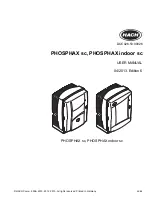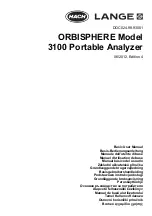
UBC10.241, UBC10.241-N1
U
–
Series
24V, 10A, DC-UPS
May. 2008 / Rev. 1.1 DS-UBC10.241-EN
All parameters are specified at an input voltage of 24V, 10A output load, 25°C ambient and after a 5 minutes run-in time
unless otherwise noted. It is assumed that the input power source can deliver a sufficient output current.
www.pulspower.com Phone +49 89 9278 0 Germany
18/23
25.
I
NSTALLATION
N
OTES
Mounting:
The power terminals shall be located on top of the unit. An appropriate electrical and fire end-product enclosure
should be considered in the end use application.
Do not install unit in airtight housings or cabinets. The site in which the unit is located must have sufficient
ventilation acc. to EN50272-2.
Cooling:
Convection cooled, no forced air cooling required. Do not obstruct air flow!
Installation clearances:
40mm on top, 20mm on the bottom, 5mm on the left and right side are recommended
when loaded permanently with full power. In case the adjacent device is a heat source, 15mm clearance are
recommended.
Risk of electrical shock, fire, personal injury or death!
Turn power off and disconnect battery fuse before working on the DC-UPS. Protect against inadvertent re-powering.
Make sure the wiring is correct by following all local and national codes. Do not open, modify or repair the unit,
except replacement of the battery. Use caution to prevent any foreign objects from entering into the housing.
Do not use in wet locations or in areas where moisture or condensation can be expected.
Service parts:
The DC-UPS contains an integrated battery which must be changed on a periodic basis, see chapter 26 and. 28.1.
The tripping of an internal fuse is caused by an internal fault. If damage or malfunctioning should occur during
operation, immediately turn power off and send unit to the factory for inspection! For Troubleshooting see 28.4.
Wiring and installation instructions:
(1) It is recommended to install the DC-UPS in a place where the integrated battery will not be heated up by
adjacent equipment. The unit is equipped with a fuseholder and a 30A battery fuse type ATO
®
257 030
(Littelfuse). The battery fuse protects the wires between the battery and the DC-UPS. It also allows the
disconnection of the battery from the DC-UPS which is recommended when working on the battery or DC-UPS.
Disconnect battery fuse before connecting the battery.
(2) Connect the power supply to the input terminals of the DC-UPS.
(3) Connect the buffered load to the output terminals of the DC-UPS. The output is decoupled from the input
allowing load circuits to be easily split into buffered and non buffered sections. Noncritical loads can be
connected directly to the power supply and will not be buffered. The energy of the battery can then be used in
the circuits which require buffering.
(4) Plug-in the fuse when the wiring is finished.
Fig. 25-1
Typical wiring diagram
24V
unbuffered
branch
24V
Power
supply
+
-
N
L PE
DC-UPS
UBC10.241
24V
IN
+
-
+
-
24V
buffered
branch
24V
OUT
Buffered
load
+
-
Unbuffered
load
+
-
Summary of Contents for 4350006.71
Page 12: ...Page 12 Laser Safety thicknessCONTROL MTS 8201 LLT 4350006 71 ...
Page 62: ...Page 62 Instruction Manual Software thicknessCONTROL MTS 8201 LLT 4350006 71 ...
Page 64: ...Page 64 Pneumatic Plan thicknessCONTROL MTS 8201 LLT 4350006 71 ...
Page 70: ...Page 70 Declaration of Incorporation thicknessCONTROL MTS 8201 LLT 4350006 71 ...
Page 95: ...Operating Instructions scanCONTROL 29xx ...
Page 100: ......
Page 135: ...Page 41 Operation of the Sensor with a PC scanCONTROL 29xx Fig 24 Predefined measuring fields ...
Page 193: ......
Page 194: ......
Page 229: ......







































